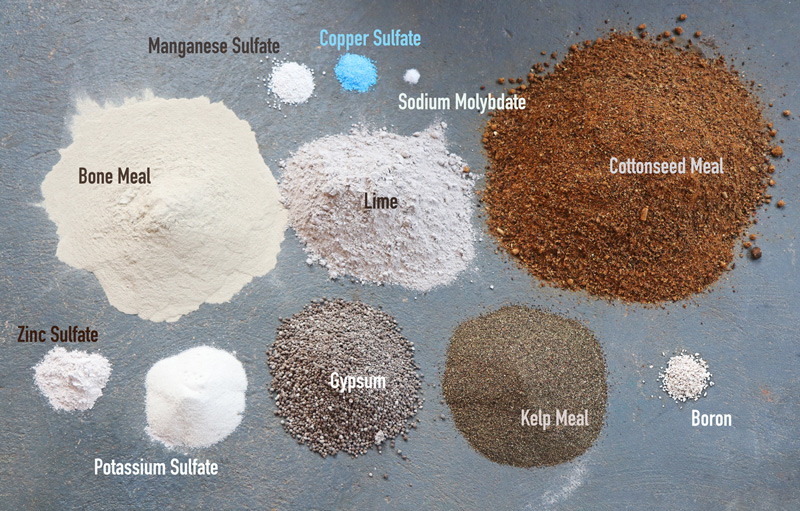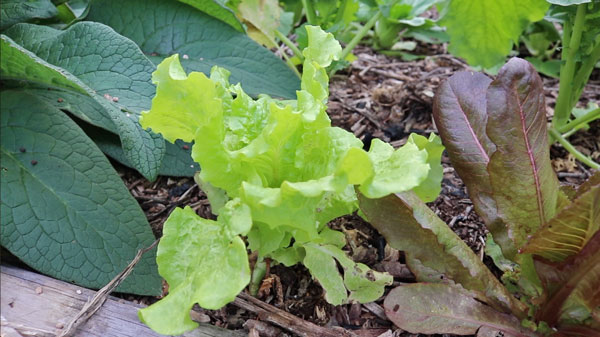My friend Elizabeth’s no-till garden needs some help. Though it’s quite productive, there is a layer of hardpan just beneath it which she is now breaking up with a broadfork as you can see in my recent video:
Beyond that, however, she just got a soil test back and the results are almost as bad as they were in my garden. She took samples from the dirt beneath her mulch layer and sent them in for testing, and the test showed a marked lack of almost all macro and micronutrients.
I called her last night and we talked about possible solutions.
First, the broadforking through the hardpan that she started is obviously a good idea. Roots and soil life need to move deeper than they currently are. Putting channels into the soil mechanically will have an impact. She shared with me that her garden is loaded with fungi, which is great. They love those decaying mulch chips and will make nutrients more available to plants. She also told me that she has a good worm population, despite them being too shy to appear on video.
The cracking of the hardpan fixes the mechanical portion of the problem. The soil life helps with the biological. But the final slice of the pie is the mineral problem. Elizabeth’s garden needs better nutrition.
Dropping a ton of mulch will add some nutrition to a garden; however, when the mulch is coming from similar soil which is also depleted, I cannot see it filling in the missing elemental gaps.
What her soil needs to fill those gaps is a serious mix of nutrients. Like this:

As Elizabeth would rather not add cottonseed meal – which is the main nitrogen source in Steve Solomon’s fertilizer mix – we’ll drop that and put together a batch without it. Nitrogen is one of the easiest things to source for the garden and it does not have to come from cottonseed meal which may contain chemical pesticides.
Once the minerals are in the system, they will be able to cycle through the plants. If they’re not there to begin with, your crops will not have the nutrition they should, either for growing or when you eat them.
The staves in the barrel must be repaired.

Image via https://www.growingproduce.com/
Don’t get me wrong: this is already a productive garden. In the video it looks thin because we filmed in November. Earlier in the year, before two hurricanes, it was abundant. That will just get better once the hardpan is broken and a broad mix of minerals are added.
I firmly believe that this garden will be insanely productive in 2021, thanks to Elizabeth’s constant experimentation and adjustment of her techniques.


7 comments
I seem to remember Chris Trump of KNF fame getting a soil report somewhat like this, but they also tested the leaves etc of his trees and they were full of micro and macro nutrients. So the testing facility added a codicil that although the soil was lacking, it was full of microbiology and thus the nutrient shortage wasn’t a problem. This really encourages me to use KNF inputs for the next year in my backyard garden and for my fruit trees. I decided that winter is a great time to make some of the inputs that take more time like OHN (Oriental Herbal Nutrient) and at least start FAA (Fish Amino Acids).
It would be quite interesting to test the foliage on Elizabeth’s plants.
I agree! Especially (now, is that really a word?) since her garden sounds so abundant.
Doesn’t KNF add micronutrients though? I know JADAM does using sea salt. We are talking MICRO nutrients so a little is a lot. The sea salt in the DFSW equivalent adds the micros, and if you’re circulating the vegetative matter they should gradually add some into the soil via roots left in place, compost, mulch, etc.
I’m doing a JADAM/compost combination, but really in my first winter right now. My winter crops looking good so far though. I suspect my base soil is a little better than DtG’s, as I do find some buried branches and such, and occasional worms. Can’t speak to the micronutrients present though. I nay do some soil testing next year, but other things had priority this year. I would like to compare my active garden area with some field that has gotten nothing but mowing when I do.
It does add a little if you are using sea salt. I used actual ocean water in mine, which I think is better than some of the supposed “sea salts.” Still, the amounts are very, very low on some things, which is why I am fond of adding kelp meal since kelp accumulates and concentrates minerals from sea water.
I would love to see some pictures of your garden and a short write-up on your JADAM/compost methods that I would share here. Always good to see how other gardeners are working.
KNF adds microbes, as does JADAM, and microbial action is able to extract micro nutrients from soil that isn’t available to plants otherwise, and apparently doesn’t appear in soil tests either. I really have to find that Chris Trump youtube video where he talks about soil testing his macadamia nut tree farm.
I asked about seedmeal at the local Tractor Supply, and they didn’t even seem to know what it was, despite carrying all sorts of meals for animal feed.
Comments are closed.